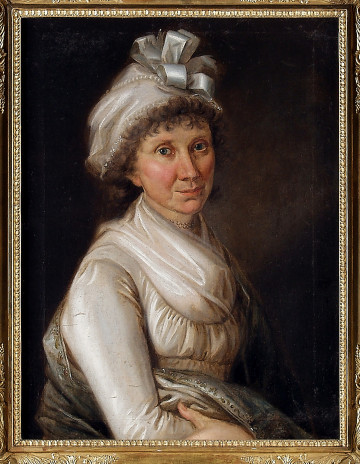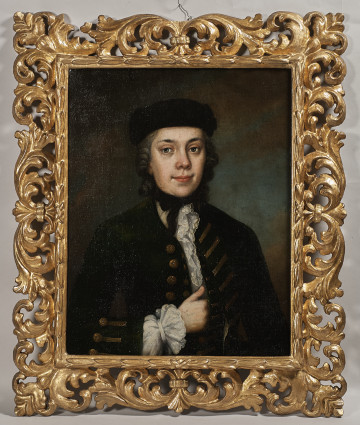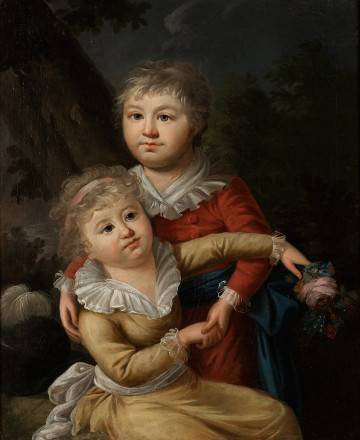
Portrait of Aleksandra Potocka, née Lubomirska
2nd half of the 19th century
Castle Museum in Łańcut
Part of the collection: Orient
A pair of porcelain vases with lids with a bronze base. The bottom is round, the belly widens towards the top getting more convex rising into a short neck. The neck has a domed lid with a handle in the shape of a "Fo dog"/"Buddha lion". According to Chinese beliefs, it was a symbol of dignity and power. It protected from evil forces and spirits and it was also considered a protector of the law. It was placed in front of state buildings, temple gates and tombs. A pair of statuettes depicting a Fo dog was also considered a perfect gift for an emperor, expressing respect for the ruler. The appearance of the Fo dog in Chinese culture was influenced by Buddhism, in which the lion was a symbol of holiness, but at that time the Chinese did not know such an animal (lions did not exist in China), so the first sculptures of it were created based on a model of a dog, which was later called "Buddha's dog" (the word Fo stands for Buddha in Chinese language). Decoration painted in cobalt, red and gold on a white background with floral motifs. The bronze base is decorated with motifs of volutes called oculus (bull's-eye) and stylized leaves, of European manufacture. It was created as an export product to Europe, decorated in the Imari style. The name comes from the port in Japan where the porcelain was manufactured, located about 6 km south-east of Arita, in the province of Hizen, on the island of Kyushu. The wares were transported from the port to Europe. The history of Japanese porcelain dates back to the beginning of the 17th century. The vessels were made from local materials - kaolin clay, at first inspired by Chinese ceramics. With time, multicoloured decorative glazing combined with underglaze blue became a characteristic feature of the style. These patterns were called Imari. Imported by Dutch merchants, they were very popular in Europe at the end of the 17th century and became a permanent fixture of fashionable Rococo and Neoclassical salons. In 1830s imitations of imari began to be produced in Meissen, Delft and in other manufactories. Japan, Arita, 18th century.
Object type
Orient
Owner
Castle Museum in Łańcut
Identification number
Location / status

2nd half of the 19th century
Castle Museum in Łańcut

3. ćwierć XVIII wieku
Castle Museum in Łańcut

1. ćwierć XIX wieku
Castle Museum in Łańcut
DISCOVER this TOPIC
Museum of King Jan III's Palace at Wilanów
DISCOVER this PATH
Educational path